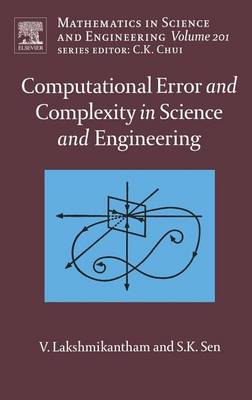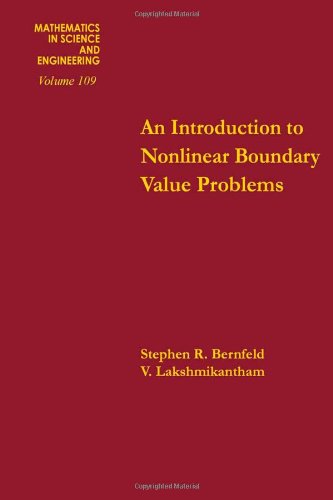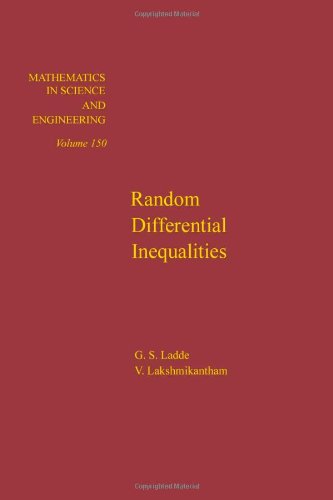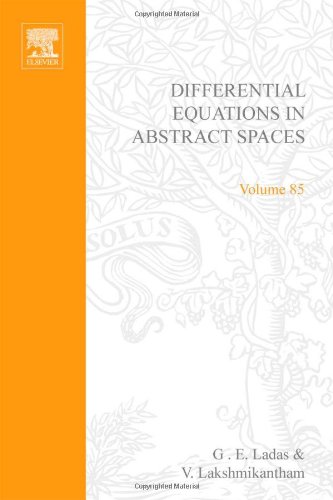Mathematics in Science and Engineering
1 primary work • 6 total works
Book 201
Computational Error and Complexity in Science and Engineering
by V. Lakshmikantham and S K Sen
Published 4 March 2005
The book "Computational Error and Complexity in Science and Engineering" pervades all the science and engineering disciplines where computation occurs. Scientific and engineering computation happens to be the interface between the mathematical model/problem and the real world application. One needs to obtain good quality numerical values for any real-world implementation. Just mathematical quantities symbols are of no use to engineers/technologists. Computational complexity of the numerical method to solve the mathematical model, also computed along with the solution, on the other hand, will tell us how much computation/computational effort has been spent to achieve that quality of result. Anyone who wants the specified physical problem to be solved has every right to know the quality of the solution as well as the resources spent for the solution. The computed error as well as the complexity provide the scientific convincing answer to these questions.
Specifically some of the disciplines in which the book will be readily useful are (i) Computational Mathematics, (ii) Applied Mathematics/Computational Engineering, Numerical and Computational Physics, Simulation and Modelling. Operations Research (both deterministic and stochastic), Computing Methodologies, Computer Applications, and Numerical Methods in Engineering.
Key Features:
- Describes precisely ready-to-use computational error and complexity
- Includes simple easy-to-grasp examples wherever necessary.
- Presents error and complexity in error-free, parallel, and probabilistic methods.
- Discusses deterministic and probabilistic methods with error and complexity.
- Points out the scope and limitation of mathematical error-bounds.
- Provides a comprehensive up-to-date bibliography after each chapter.
Specifically some of the disciplines in which the book will be readily useful are (i) Computational Mathematics, (ii) Applied Mathematics/Computational Engineering, Numerical and Computational Physics, Simulation and Modelling. Operations Research (both deterministic and stochastic), Computing Methodologies, Computer Applications, and Numerical Methods in Engineering.
Key Features:
- Describes precisely ready-to-use computational error and complexity
- Includes simple easy-to-grasp examples wherever necessary.
- Presents error and complexity in error-free, parallel, and probabilistic methods.
- Discusses deterministic and probabilistic methods with error and complexity.
- Points out the scope and limitation of mathematical error-bounds.
- Provides a comprehensive up-to-date bibliography after each chapter.
In this book, we study theoretical and practical aspects of computing methods for mathematical modelling of nonlinear systems. A number of computing techniques are considered, such as methods of operator approximation with any given accuracy; operator interpolation techniques including a non-Lagrange interpolation; methods of system representation subject to constraints associated with concepts of causality, memory and stationarity; methods of system representation with an accuracy that is the best within a given class of models; methods of covariance matrix estimation;
methods for low-rank matrix approximations; hybrid methods based on a combination of iterative procedures and best operator approximation; and
methods for information compression and filtering under condition that a filter model should satisfy restrictions associated with causality and different types of memory.
As a result, the book represents a blend of new methods in general computational analysis,
and specific, but also generic, techniques for study of systems theory ant its particular
branches, such as optimal filtering and information compression.
methods for low-rank matrix approximations; hybrid methods based on a combination of iterative procedures and best operator approximation; and
methods for information compression and filtering under condition that a filter model should satisfy restrictions associated with causality and different types of memory.
As a result, the book represents a blend of new methods in general computational analysis,
and specific, but also generic, techniques for study of systems theory ant its particular
branches, such as optimal filtering and information compression.
Introduction to Nonlinear Boundary Value Problems
by S.R. Bernfeld and V. Lakshmikantham
Published 1 January 1974
Differential Equations in Abstract Spaces
by Gerasimos E. Ladas and V. Lakshmikantham
Published 1 January 1972




